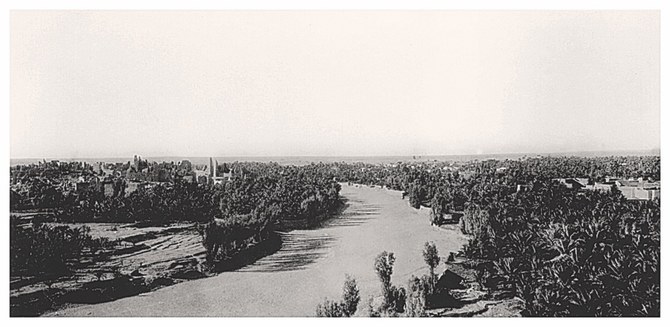Ghasiba — a story six centuries in the telling

https://arab.news/pxfvx
I believe that this is the most beautiful way tostart my article, by using this statement describing the ruins of Ghasiba, which was transmitted by the elderly Abdulaziz Al-Daghaither, who specialized in the history of Ghasiba.
Ghasiba: This place which is a great and glorious witness to the birth of Diriyah, which is our historical and cultural capital, formed almost 600 years ago at the hands of Prince Manaa' Al-Muraide (the 13th great-grandfather of King Salman), then to the birth of the First Saudi State at the hands of Imam Mohammed bin Saud (the fifth great-grandfather of King Salman).
Many of Diriyah’s visitors over the past few years focus on the historical At-Turaif neighborhood in Diriyah, which is undoubtedly a cradle of heroes, imams and kings, and was undoubtedly a factory for Saudi men which generated great leadership for the First Saudi State, but also to the Second Saudi State, including Imam Turki bin Abdullah (the third great-grandfather of King Salman) and Imam Faisal bin Turki (the pride of the Saudi royal family). All of them were born in this great neighborhood.
Yet the Saudi story started in Ghasiba, which is the first origin and the first nucleus of the Saudi dynasty and the Saudi state, and it is no less important than the historical At-Turaif neighborhood in producing generations of the Saudi royal family, the first generations of Al-Muqrin in the 15th century until the early 17th century.
Ghasiba, and its glorious ruins overlooking Wadi Hanifah, are no less beautiful than At-Turaif and its beautiful outlook on the valley.
Ghasiba is within the ancient historical Diriyah, and is located on top of a hill in the valley, Wadi Hanifah, surrounded by it from three sides in the shape of a natural triangle tip in its corner overlooking the valley.
There is a historical narrative and archaeological ruins that should be discovered and exhibited. Its periods of glorious events started when Bin Daa carved out Ghasiba and Al-Mulaybid to his cousin Manaa'. That is why Ghasiba is considered the oldest neighborhood mentioned in historical records on Diriyah.
The rule of the descendants of Prince Manaa' Al-Muraide lasted for three centuries from the mid-15th century until the early 18th century until the era of Al-Muqrin in Ghasiba, when Imam Mohammed bin Saud, the founder of the First Saudi State, moved to Samhan after unifying Diriyah and its historical neighborhoods in the early 18th century.
Then, Ghasiba became a residence for the Al-Daghaither family, who are also from Bani Hanifah, after the Saudi royal family had moved to Samhan, then to At-Turaif neighborhood in the mid-18th century.
Among the most famous facts mentioned by historical sources about Ghasiba — specifically contemporary historians of the history of the First Saudi State — is that the palace of Imam Saud bin Abdulaziz was located in Ghasiba neighborhood, and that there was an iron gate in that palace, which was a surprise for contemporary and local historians, as well as to me. This leads us to several questions that arise as to why it was an iron gate in that palace, rather than being a door made of wood of local trees, as was the custom in the region.
Regarding the presence of the imam’s palace in that old neighborhood which is of his ancestors, was it an expression of a sentimental link to the homeland of his early ancestors of the Al-Muqrin family? Was that palace for the imam’s ancestors and chosen for keeping? Also, was the name “Bab Ghasiba” copied in some towns in Najd afterward after the gate of that palace, due to its value and quality?
The sources mentioned great events about valiant resistance to the Turkish aggression in Ghasiba, one of the Diriyah strongholds, including the story of the leadership of Prince Saad bin Abdullah bin Saud in the palace of his grandfather the imam. There were glimpses of resistance and courage in Ghasiba, whether on the part of the prince, or on the part of people around him from the Al-Daghaither family.
The story of Ghasiba should be revealed and told, especially by historians and archaeologists, by excavating it and analyzing those great historical events of the oldest settled homeland of the royal Saudi family 600 years ago.
• Dr. Badran Al-Honaihen is associate director of historical research and studies at the Diriyah Gate Development Authority.
Twitter: @balhonaihen









































